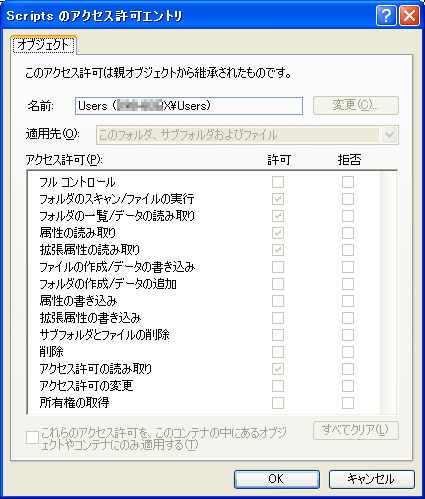PerlのCAM::PDFモジュールを使って、PDFのフォント一覧を出し、特にフォントが埋め込まれているかどうか調べます。
実行例:
$ ./listfont.pl 2.pdf
$VAR1 = [
{
'subtype' => 'CIDFontType0',
'embedded' => 'yes',
'page' => 1,
'embeddedtype' => 'Type 1 (CID)',
'basefont' => 'RAUSIV+GothicBBBPro-Medium',
'fontfamily' => 'þÿA-OTF N-0´0·0Ã0¯BBB Pro Medium'
},
{
'subtype' => 'CIDFontType2',
'embedded' => 'yes',
'page' => 1,
'embeddedtype' => 'TrueType (CID)',
'basefont' => 'BCSASB+SymbolMT',
'fontfamily' => 'Symbol'
},
{
'subtype' => 'TrueType',
'embedded' => undef,
'page' => 1,
'embeddedtype' => undef,
'basefont' => 'ArialMT',
'fontfamily' => 'Arial'
}
];
$
ソースは次の通り。
Filename: listfont.pl
#!/usr/bin/perl
use strict;
use warnings;
use CAM::PDF;
use Data::Dumper;
binmode STDOUT => ':utf8';
my $infile = shift;
my $doc = CAM::PDF->new($infile) || die "$CAM::PDF::errstr\n";
my $fonts;
for my $page (1 .. $doc->numPages()) {
foreach my $fontname (sort $doc->getFontNames($page)) {
my $font = $doc->getFont($page, $fontname);
$font = parsefont($font);
push @$fonts,
{
page => $page,
embedded => $font->{embedded},
fontfamily => decode_fontfamily($font->{fontfamily}),
basefont => $doc->getValue($font->{BaseFont}),
subtype => $doc->getValue($font->{Subtype}),
embeddedtype => $font->{embeddedtype},
};
}
}
print Dumper($fonts);
exit;
sub parsefont {
my $font = shift;
my $fontdescriptor = $font->{FontDescriptor};
if ($fontdescriptor) {
my $ref = $doc->getValue($fontdescriptor);
$font->{fontfamily} = $doc->getValue($ref->{FontFamily});
my $fontfile = $doc->getValue($ref->{FontFile });
my $fontfile2 = $doc->getValue($ref->{FontFile2});
my $fontfile3 = $doc->getValue($ref->{FontFile3});
if ( ($fontfile) || ($fontfile2) || ($fontfile3) ) {
$font->{embedded} = 'yes';
$font->{embeddedtype} ="Type 1" if $fontfile;
$font->{embeddedtype} ="TrueType (CID)" if $fontfile2;
$font->{embeddedtype} ="Type 1 (CID)" if $fontfile3;
}
return $font;
}
my $descendantfonts = $doc->getValue($font->{DescendantFonts});
if ($descendantfonts) {
if (ref $font->{DescendantFonts}->{value}) {
return parsefont(
$doc->getObjValue(
$font->{DescendantFonts}->{value}->[0]->{value}
)
);
} else {
return parsefont(
$doc->getObjValue(
$doc->getObjValue(
$font->{DescendantFonts}->{value}
)->[0]->{value}
)
);
}
}
}
sub decode_fontfamily {
my $str = shift;
$str =~s/#([0-9A-F][0-9A-F])/pack('C', hex($1))/eg;
return $str;
}
__END__
再帰処理の部分で、戻り値を2通り持たせているのですけれども、これは、
1647 0 obj<</Subtype/Type0/DescendantFonts[1646 0 R]/BaseFont/DIEAIA+SymbolMT/ToUnicode 1644 0 R/Encoding/Identity-H/Type/Font>>
が
$VAR1 = {
'DescendantFonts' => bless( {
'gennum' => '0',
'value' => [
bless( {
'gennum' => '0',
'value' => '1646',
'type' => 'reference',
'objnum' => '1647'
}, 'CAM::PDF::Node' )
],
と取られ、
9 0 obj<</Subtype/Type0/DescendantFonts 15 0 R/BaseFont/RAUSIV+GothicBBBPro-Medium/Encoding/Identity-H/Type/Font>>
が
$VAR1 = {
'DescendantFonts' => bless( {
'gennum' => '0',
'value' => '15',
'type' => 'reference',
'objnum' => '9'
}, 'CAM::PDF::Node' ),
みたいに取られまして、
よくわかんないけれども元のPDFで2通りの記述があるのがそのままパースされちゃうので、分岐してみました。
こんな危なっかしいコード書いていることでもわかるとおり、これで決定版というわけではなく(もれなく間違いなく調べられるかどうかは僕も不明ということ)。普通にAcrobatやAdobe ReaderでCtrl+Dしてフォントタブを選択して調査したほうがいいかもしれません。



